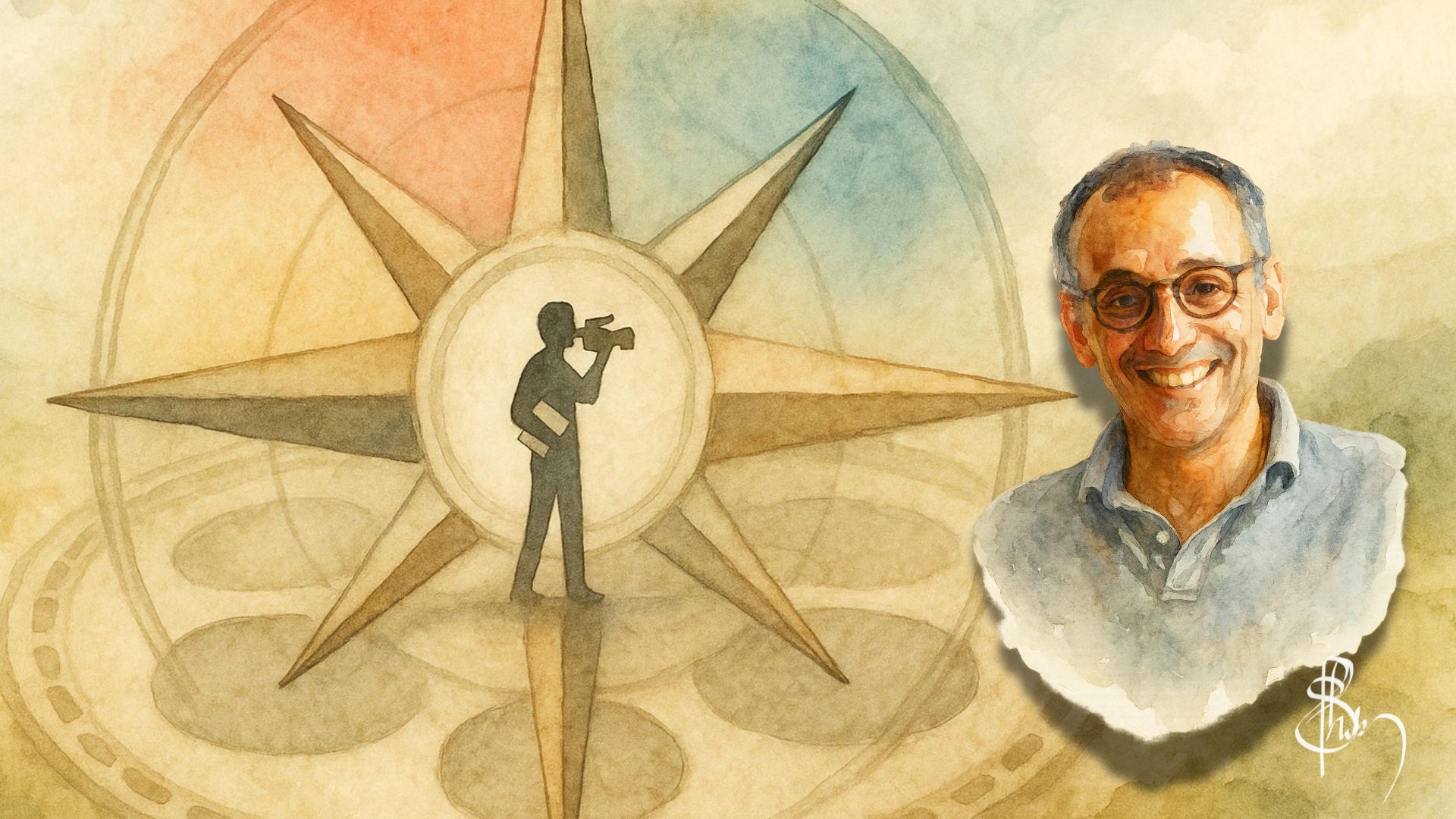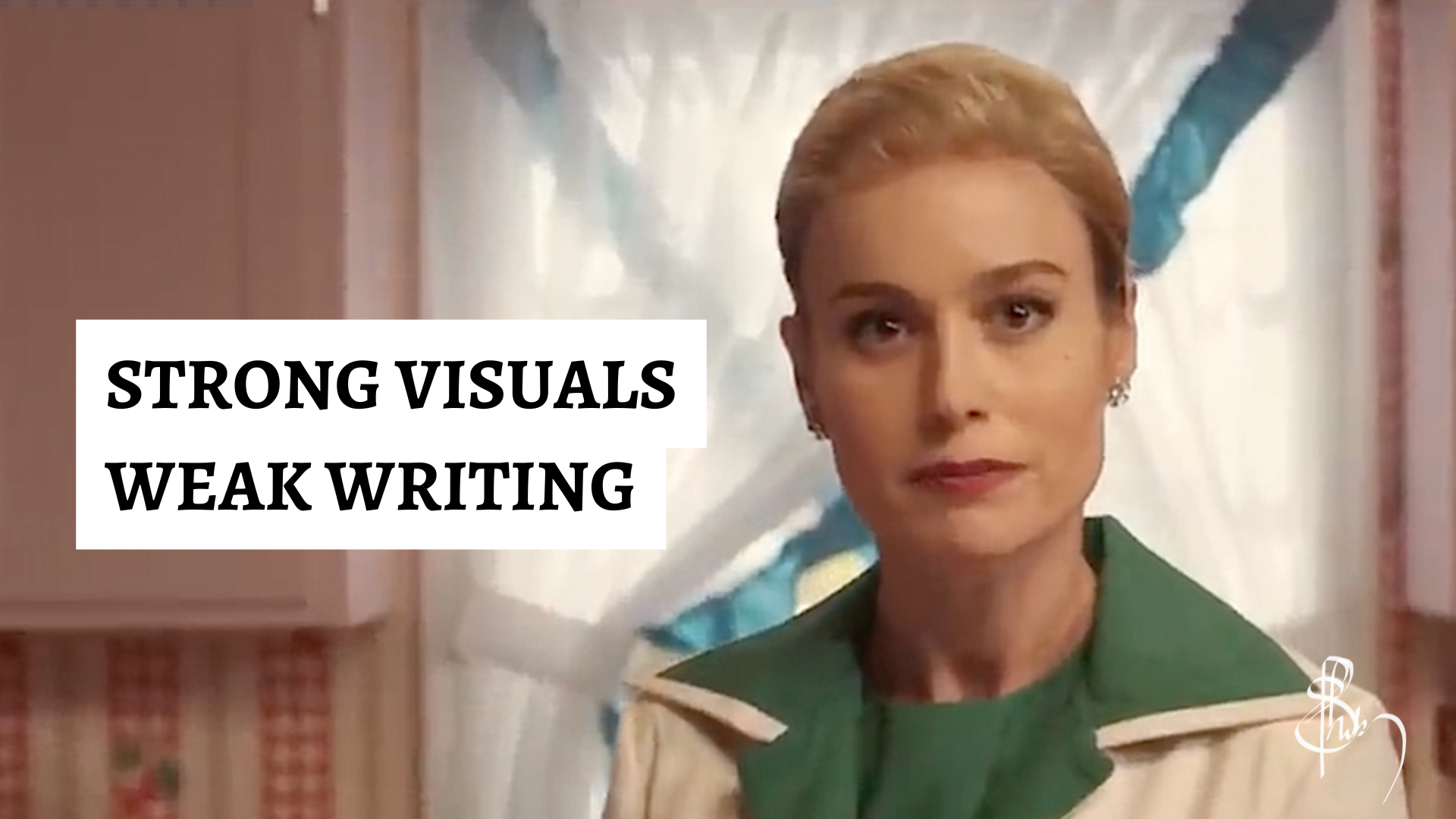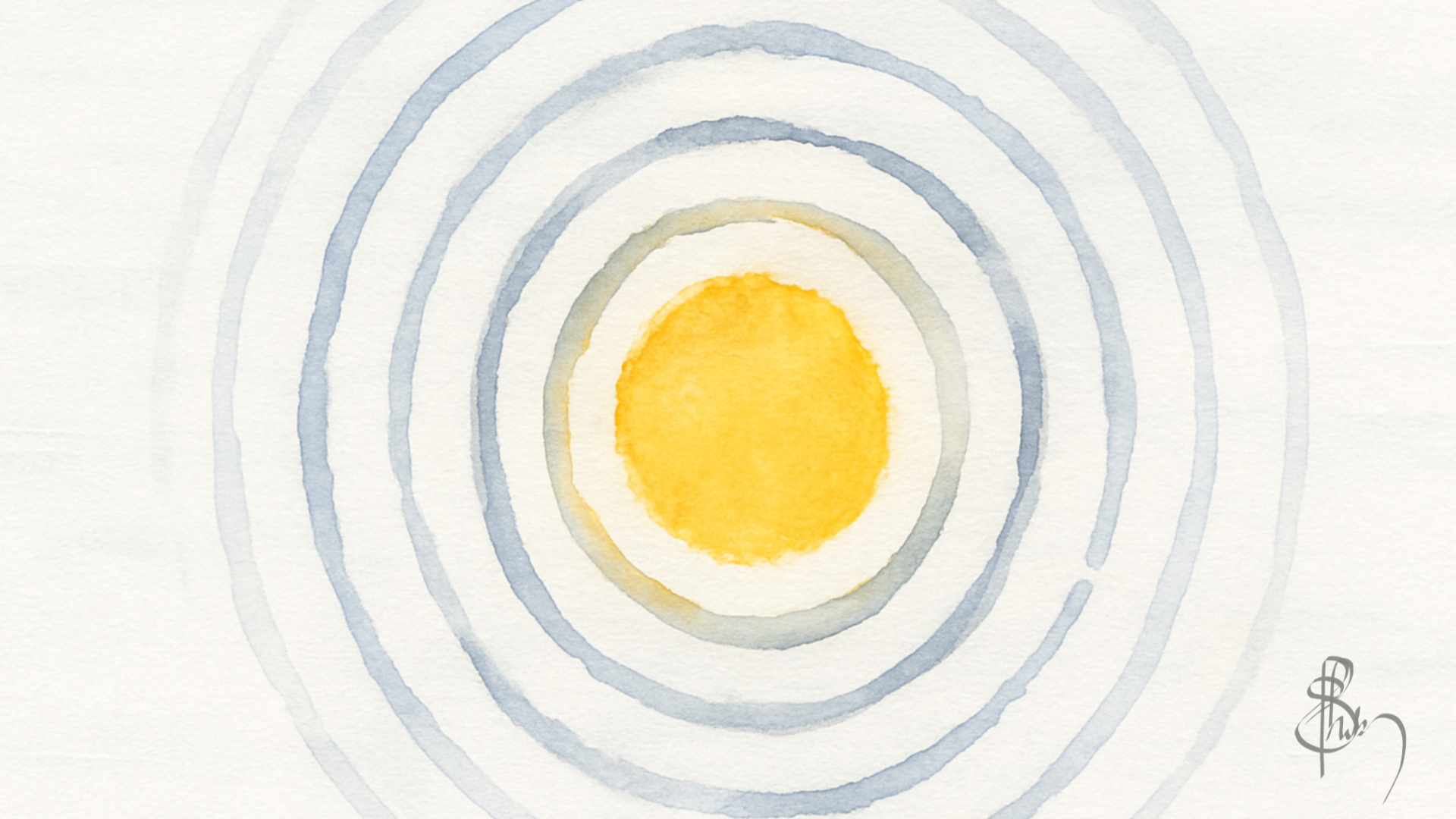In this post I share with you what you need to know to shoot any scene. That too not in some particular way of mine, or theirs or someone else’s. But you will learn to see in your unique way, without using any cameras, or lights or actors. Something that you can do in your daily life to become a better filmmaker.
Welcome back. If you are new here I’m Ashik Satheesh, a writer and filmmaker from Kerala, India. On this website we learn to tell great stories together and make the world a better place, one story at a time. Even though I aspired to do that, I had no idea how to even cover a scene when I was starting. I believed that there was this ‘right’ way to shoot a scene that all great filmmaker knew. And I thought that if I did not learn to do that, I could not become a great filmmaker.
Then I came across this book called, ‘On Filmmaking’ by Alexander Mackendrick and I found some of my answers. Now I can take any scene in any script and shoot it confidently. For you to do the same there are three things that you need to know, which are
- Knowing A, B, C, D
- Knowing A + P + P + L + E = ‘Apple’
- Knowing to say “I Want Apple”
By the way, if you want a video version of this in Malayalam, check here.
1. The A, B, C, D of Cinema
Film is a language, just like the English language you are reading right now. The purpose of any language is to help communicate an idea that is inside one person’s head to another person. When you started learning a new language, what was the first thing you learned? The alphabets of the language, the A, B, C, D of English, the അ, ആ, ഇ, ഈ of my mother tongue Malayalam. If the first things you learn in a language are its alphabets, and as film is a language, what then are the alphabets of film?
If you break apart an entire film into its smallest indivisible parts, then what you will end up with are individual shots and the sounds used in that shot. Leaving aside sounds that make up a film for another day, let us look at what remains, the various shot types.

1.1 Three Basic Visual Alphabets
For simplicity sake you can think of all shots that involve human beings engaged in a scene to belong primarily to the following three shot types:
- Wide
- Medium
- Close
A Wide shot is where is you see people from head to toe. A Medium shot is when you see from the waist above. And in a Close-up shot you see just the face or things smaller than that. Then there are Extreme Close-up shots of say just the eyes, or hands and other combinations of shots like the Medium Close-up, Extreme Wide and so on.
1.2 Alphabets of Camera Position
Now that you know the three broad shot types—Wide, Medium, Close—let us look at the various ways you can position the camera within these. Based on where the camera is placed in respect to the actor in the scene, the are the following angles:
- Front angle, where the camera is placed dead in front of the actor
- 45 degree angle, as the name suggests the camera is placed at a 45 degree angle to the actor
- 90 degree or Side Profile, where you see just one side of the actor
- Back, from the back of course
- Over The Shoulder (OTS), from the back again, but we see the opposite person over the shoulder of this actor
Again there are various combinations of these with the three basic shot types of Wide, Medium and Close. And on top of those based on how high or low the camera is placed you get a multitude of shot combinations that will take forever to list down. Let us not go there for now.
After all there are 26 alphabets in the English language (56 in Malayalam!) and you didn’t learn all of that in one day. A good explanation of these can be found in the book I talked about in the beginning, ‘On Filmmaking’ by Alexander Mackendrick. I highly recommend it.
1.3 Spotting the Alphabets
What I hope this has given you is a way to look at shots the next time you see any film. Is it a Wide or a Medium shot? Is the camera placed at an angle to the actor or facing straight?
Remember when you had learned your first few alphabets you were so happy to spot those in a newspaper? Once you have learned to spot the various shot types used in a film, you will feel so again. Watch our debut film Munnariv (2020) and try to identify the various shots used in it.
Try it out. You will find that in Munnariv there a lot of Wide and Medium shots, but very little Close shots. This was an intentional choice by me as the film’s director. Which brings us to the second point in knowing how to shoot a scene.
2. A + P + P + L + E = ‘Apple’
Once you knew the alphabets in a language the next thing you learned to do was to string together those alphabets to form words. The “A for Apples” and “B for Balls”. You learned more and more words every day to describe the things around you and you built your vocabulary. You realised that you can use various words to point to the same thing.
For example, we use movie, cinema, film all to mean the same thing. There are less used words such as motion picture, show, theatre and so on. Even though there are subtle differences in the meaning created by each of these words, you can use most of these words in your conversation and people will understand what you mean.
Similarly you can use any of the multitude of shot types we discussed above in any scene to point to the same thing. To do that you have to practice using those shots. The more vocabulary you have practiced using, the more options you have when writing a sentence.
2.1 Practicing How to Shoot a Scene
Throughout your life in school and college you have learned a lot of things. Remember integration and calculus? The chemical compositions and velocity mass equations you memorised to pass the exams? All the while wondering why in the world you were learning all of that. You are going to have to do something similar here as well.
This is what you have to do:
- Write a 30 second scene of two people talking
- Get two aspiring actor friends of yours to learn the dialogues
- Put them together in a room with sunlight
- Shoot the scene on your phone (or whatever camera you have) in the following ways:
- Wide, where you see both the actors from head to toe
- Medium Wide, where you see both the actors from the waist and above
- Medium shot of Actor 1, from the chest above of Actor 1
- Medium shot of Actor 2, from the chest above of Actor 2
- Close Actor 1, where the face of Actor 1 fills the frame
- Close Actor 2, where the face of Actor 2 fills the frame
- Over the Shoulders (OTS) of Actor 1, you see the face of Actor 2
- OTS of Actor 2, you see the face of Actor 1
Remember, you have to shoot the whole 30 second scene you have written, in each of these shots. Even when the actor is not talking or doing anything, shoot. By the end of repeating the same thing for so many times your aspiring actor friends will probably drop all their acting aspirations. Hence the 30 second script. And please don’t write some hard to say poetic dialogues. This is not the time for that Oscar winning script of yours.
3. Saying “I Want Apple”
Now bring all of those shots into your editing table, in whichever app you use, and edit the short together. First edit in the way you want it to. Go by your intuition and see how it feels to you. Show to another person and see if you are able to create the same feelings in them as it did to you. This is where you become a good filmmaker.
Going back to our analogy, as a child you would have pointed out to an apple and said ‘Apple’. Sometimes your parents understood that you were hungry and fed you, sometimes they didn’t. What you actually had to say was “I want apple”, to learn to string others words together.
Not only do you need to learn to string those together, you also need to make sure that they clearly understood you. You can arrange those three words is various ways, “Want I Apple”, “Apple want I”, “Apple I want”, and so on. To be fed though you have to learn to arrange it in a way that your parents would understand exactly what you meant. You had to learn to communicate the idea in your head to the other person.
The equivalent of that in film is what happens on the editing table, when you place one shot after the other. The various shots you shot practicing how to shoot a scene are the words (‘I’, ‘want’, ‘Apple’ and so on). The sequence in which you arrange those words is the sentence that says “I want apple”.
3.1 Apple I Want and Apple Want I
Now go back to your editing app and randomly edit from one shot to another. Cut from the wide shot directly to the close shots. Or start with the close and then go to the medium shots and end in the wide. Or cut the whole thing in just medium shots. You have all the shots you need to do any combination of these.
When you see the various edits pay attention to how each makes you feel. How does it feel when you cut from a medium to a close? How different is it feel when you start from wide shots and progressively end in the close shots? How does it feel when you don’t see the actor who is speaking the dialogue, but you only see the actor who is responding to the dialogues? Can you stretch the 30 seconds into a 1 minute sequence?
Once you have all the various edits, show each to a different set of your friends. And again see if they feel the same things as you did. Or do they feel something else? Take notes on all of these.
3.2 Your Unique Way
Yes, I know it sounds tedious. And it is. But remember, you did not learn to write essays and stories in a day. It took you years of schooling.
Why these steps are important is because you are building your vocabulary, your personal repertoire of shots. This is the time to learn and test. You are never going to have the luxury of doing this on an actual set. There you have to decide beforehand what shots you will have to capture. Sometimes even months in advance. Every extra shot you take there is going to cost you money. How can you know beforehand which shot to use where?
The work that you are doing now will help you figure this out. It is going to save you time and money. It is also helping you build your unique way of seeing the world.
The shots you use to cover a scene is how your film is different from others. Think of it like two writers writing the same story. They will never end up using the same words. The words a writer use is a representation of their choice, life experiences, what they have read and so on. It is their unique world view.
If you were to reshoot Munnariv it would look a lot different from what we made, even if you had the same actors and sets. The types of shots you use to cover a scene is your unique way of seeing this world. This is the way to do discover that. Once you have gone through such exercises you will be able to turn any scene into a series of shots with the confidence that you can make audience feel the way you want them to feel.
BONUS: How to Shoot a Scene in Your Daily Life
Now, you understand all of this, but you don’t have the time to do these exercises? Nothing can beat practice, but as I promised you in the beginning of this post, here is something that you can do in your daily life to become a better filmmaker, without a script, camera, lights or actors. This is what you have to do:
- Everyday sit down to eat your meals with others, your family, friends, colleagues.
- Do not speak, but listen in on their conversation.
- Observe how you are seeing them speak. Is it a Wide shot where you see them from head to toe? Is it a Medium where you see only the chest and above? Is your attention drawn only to their hand movements, or eyes in a Close shot?
- Then observe at what instance your attention shifts from one person to another. At what instance is your attention on the listener and not the speaker? Does your attention rapidly shift from one to another, or does it linger on one for the whole time?
Observe all of this over many meals. What you are doing in Step 3 is you are identifying the shot type. And what you are doing in Step 4 is you are identifying the editing points, the assembly of the footage. If your friends are okay with you filming them, then also take your phone and shoot the whole thing, turning from one person to the other in one continuous shot. This is how you can learn how to shoot a scene in your daily life.
Conclusion
The more you look at things through the lens of shot types and how to assemble them together, the more you will start thinking in the language that is cinema. In that you are doing one of the most important things you can do as an artist, discovering your unique way of seeing the world. That is what we all can contribute to the world. It will take time, but if I can do it, you can too.
That was a lot to pack in one post. But I hope it has been valuable to you. If so, do share it with your aspiring filmmaker friends as well. You should also check out my book The Indian Indie Film (or Make Your Film for rest of the world). In it you will find how you can debut your film career making a feature film for ₹5 lakhs ($7,000) on an iPhone, like I did. Enjoy!
Hey Aspiring Filmmaker,
I debuted my film career making a feature film for ₹5 lakhs ($7,000) on an iPhone. I’d like to help you do the same. So I wrote everything I learned into a book. It is now available on Amazon, called The Indian Indie Film (or Make Your Film for rest of the world). Enjoy!





